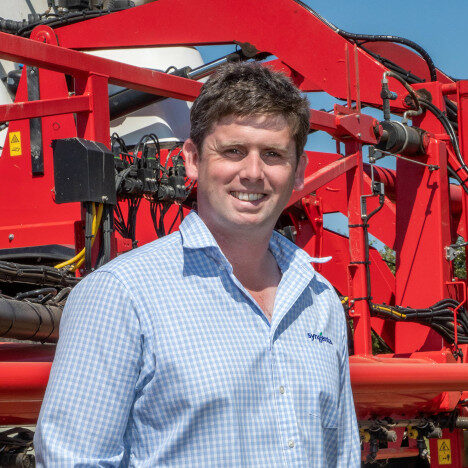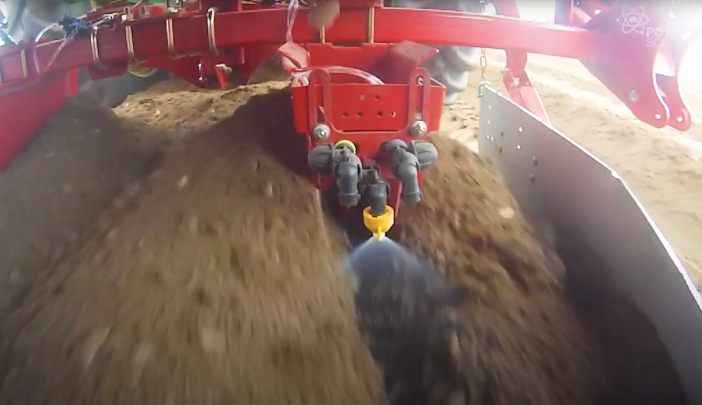During a recent webinar, Syngenta provided growers with new advice on the in-furrow application of Amistar during potato planting. This is will achieve a more complete zone of protection around the mother tuber when using high-speed belt planters according to application specialist Harry Fordham.
He noted that modern planters are capable of working at a far higher speed compared to traditional cup planters. “That could compromise the consistent incorporation of spray in the soil target zone around the mother tuber with the original sprayer set up on the planter, along with potentially resulting in the risk of drift at the higher speed,” he warned.
As Amistar plays a key role in the control of both black dot and Rhizoctonia pathogens in the soil, Syngenta has spent three years trialling new nozzle technology, water volume and nozzle orientation.

Mr Fordham pointed out that the original brass AZ in-furrow nozzle – which is no longer available – had a very small orifice that produced fine droplets susceptible to drift. Some of the alternatives trialled include hollow cone technology to give a wide band of application and cover more of the soil at speed, along with a larger orifice that is less prone to blockages and drift.
Results showed that the Lechler TR80 performed consistently well over successive seasons, with a recommended setup of two nozzles – one at the front and a second at the rear of the planter shoe to spray the soil as it falls back in to cover the tuber.
Research has shown that 100 litres per hectare produced the best results for both yield and tuber quality, compared to 50 litres, with the TR80 operated with a 015 nozzle in both situations.
Another combination showed good promise from a year of trials, with two Lechler FT90 nozzles set up to deliver 33% of the spray at the front of the shoe using an 01 sized nozzle and 66% at the rear on the closing soil through an 02 nozzle.
“The relatively large nozzle orifice would be unlikely to block. More interestingly it is a pre-orifice nozzle design, so offers some level of drift reduction and may be a combination to consider, especially with higher-speed planters,” Mr Fordham said.
During Norfolk trials, undertaken in a field specifically selected for the high risk of soil bourne black dot, the use of Amistar reduced the incidence of severe infection on the harvested tubers. Results also showed improved disease control for silver scurf and greater marketable yield.

The TR80 nozzle set up 
The FT90 nozzle set up
Syngenta’s potato technical manager Michael Tait warned that research showed black dot was proving extremely persistent in soils, alongside indications that the pathogen is involved with the early die back complex that is being reported in crops.
“Microsclerotia of black dot can typically persist in the soil for eight years or more, which means that once established it can usually survive from one potato crop to the next in the rotation,” he said. The pathogen is favoured by warm, wet conditions often associated with changing climate.
“We have seen very good results from Maxim seed tuber treatment, to prevent the transfer of seed-borne pathogen onto the daughter tubers. But with this disease now so prevalent in soils, growers and agronomists need to be looking at the combination of both Maxim and Amistar to manage its damaging effects,” he advised.
Mr Tait also suggested that a combination of seed and soil controls was effective in countering Rhizoctonia black scurf with Dutch trials showing that Amistar in-furrow and Maxim seed treatment each effectively halved the calculated Rhizoctonia index – a measure assessing both the severity and incidence of infection – from 16 in the untreated to 7.5 or 8 respectively. When the two products were used together, however, the index was further significantly reduced, to just 3.

